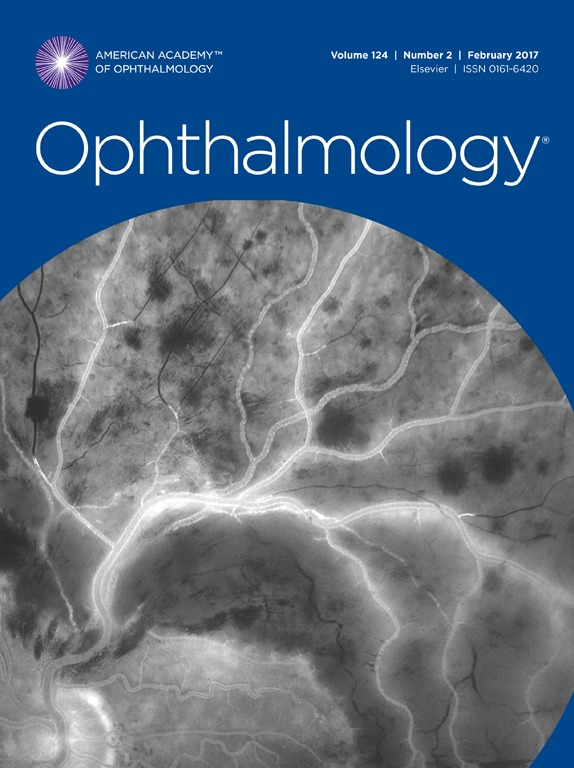Privacy-Preserving Technology Using Federated Learning and Blockchain in Protecting against Adversarial Attacks for Retinal Imaging
IF 9.5
1区 医学
Q1 OPHTHALMOLOGY
引用次数: 0
Abstract
Purpose
Collaboration provides valuable data for robust artificial intelligence (AI) model development. Federated learning (FL) is a privacy-enhancing technology that allows collaboration while respecting privacy via the development of models without raw data transfer. However state-of-the-art FL models still face challenges in non-independent and identically distributed (non-IID) health care settings and remain susceptible to privacy breaches. We propose an FL framework coupled with blockchain technology to address these challenges.
Design
Retrospective, multicohort study.
Main Outcome Measures
We evaluated our FL model performance in myopic macular degeneration (MMD) and OCT classification and compared our model against state-of the-art FL and centralized models.
Methods
A total of 27 145 images from Singapore, China, and Taiwan were used to design a novel FL aggregation method for the detection of MMD from fundus photographs and macular disease from OCT scans in feature distribution skew and label distribution imbalance scenarios. We further performed adversarial attacks (label flipping and clean label). As proof of concept, blockchain was incorporated into FL to demonstrate secure transfer of model updates across collaborating sites.
Results
Our FL model showed robust performance with an area under the curve (AUC) of 0.868 ± 0.009 for MMD detection and 0.970 ± 0.012 for OCT macular disease classification. In label flipping attack, our FL model had an AUC of 0.861 ± 0.019, similar to the centralized model (AUC 0.856 ± 0.015) and higher than other FL models (AUC 0.578–0.819). In clean label attack, our FL model had an AUC of 0.878 ± 0.006, which was comparable to the centralized model (AUC 0.878 ± 0.001) and superior to other state-of-the-art FL models with an AUC of 0.529 to 0.838. Simulation showed that the additional time with blockchain in 1 global epoch was approximately 5 seconds. The addition of blockchain to the FL framework was feasible with a minimal impact on model development time.
Conclusions
Our proposed FL algorithm overcomes the shortcoming of the traditional FL in non-IID situations and remains robust against adversarial attacks. The integration of blockchain adds further security during the transfer of model updates. Blockchain-enabled FL can be a trusted platform for collaborative health AI research.
Financial Disclosure(s)
The author(s) have no proprietary or commercial interest in any materials discussed in this article.
利用联盟学习和区块链保护隐私技术抵御视网膜成像中的对抗性攻击。
目的:协作为强大的人工智能(AI)模型开发提供了宝贵的数据。联合学习(FL)是一种提高隐私保护的技术,它允许在不传输原始数据的情况下通过开发模型进行协作,同时尊重隐私。然而,最先进的联合学习模型在非独立和同分布(非 i.i.d.)的医疗环境中仍面临挑战,并且仍然容易受到隐私泄露的影响。为了应对这些挑战,我们提出了一种与区块链技术相结合的新型 FL 框架:设计:回顾性多队列研究 对象与方法:我们利用来自新加坡、中国大陆和台湾的 27,145 张图像设计了一种新型 FL 聚合方法,用于在特征分布倾斜和标签分布不平衡的情况下,从眼底照片中检测近视黄斑变性(MMD),从光学相干断层扫描(OCT)中检测黄斑疾病。我们还进行了对抗攻击(标签翻转和干净标签)。作为概念验证,区块链被纳入FL,以证明模型更新在合作站点间的安全传输:我们评估了我们的 FL 模型在 MMD 和 OCT 分类中的性能,并将我们的模型与最先进的 FL 模型和集中式模型进行了比较:结果:我们的FL模型表现稳健,MMD检测的接收工作特征曲线下面积(AUC)为0.868±0.009,OCT黄斑病变分类的接收工作特征曲线下面积(AUC)为0.970±0.012。在标签翻转攻击中,我们的 FL 模型的 AUC 为 0.861±0.019,与集中式模型(AUC 0.856±0.015)相似,高于其他 FL 模型(AUC 0.578-0.819)。模拟结果表明,在一个全局历时中,使用区块链所需的额外时间约为 5 秒。在 FL 框架中加入区块链是可行的,对模型开发时间的影响很小:我们提出的 FL 算法克服了传统 FL 在非 i.i.d. 情况下的缺点,并且在对抗性攻击方面保持稳健。区块链的集成进一步增加了模型更新传输过程中的安全性。区块链支持的 FL 可以成为健康人工智能合作研究的可信平台。
本文章由计算机程序翻译,如有差异,请以英文原文为准。
求助全文
约1分钟内获得全文
求助全文
来源期刊

Ophthalmology
医学-眼科学
CiteScore
22.30
自引率
3.60%
发文量
412
审稿时长
18 days
期刊介绍:
The journal Ophthalmology, from the American Academy of Ophthalmology, contributes to society by publishing research in clinical and basic science related to vision.It upholds excellence through unbiased peer-review, fostering innovation, promoting discovery, and encouraging lifelong learning.
 求助内容:
求助内容: 应助结果提醒方式:
应助结果提醒方式:


